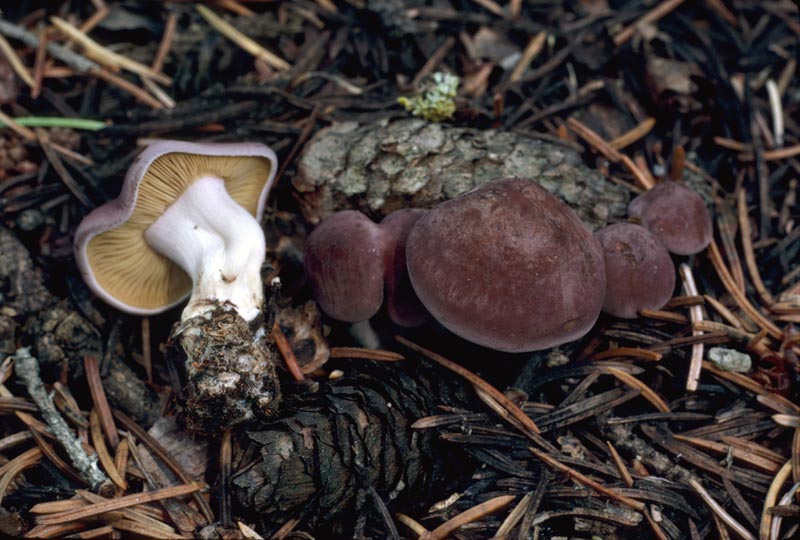Habitat: Occurs with conifers such as Engelmann spruce, subalpine fir, and Douglas-fir.
Conservation Status: Not of concern
Edibility: In Europe, it is said to be edible but, the odor suggests it would not be particularly tasty, and a conservation ethic would argue against collecting it unless found in abundance.
In Europe, it is said to be edible but, the odor suggests it would not be particularly tasty, and a conservation ethic would argue against collecting it unless found in abundance.
Calocybes are small to medium fungi that look very much like tricholomas. The cap is white or brightly colored, the odor often farinaceous, and the basidia contain small siderophilous granules (they turn blackish violet when heated with iron in a chemical reagent, acetocarmine). C. onychina is a not commonly collected, high-mountain species that occurs with conifers such as Engelmann spruce, subalpine fir, and Douglas-fir. When fresh, it has a beautiful, velvety, burgundy-colored cap that contrasts with the creamy yellow gills and the purple-flushed white stipe. The texture of the cap and unusual color combination separate it from the tricholomas which it otherwise resembles closely. We have found it in the spring in the Cascades and summer in the southern Rockies.
Sources: Trudell, Steve and Joe Ammirati. Mushrooms of the Pacific Northwest. Portland, Timber Press, Inc. 2009.
PNW Herbaria: Specimen records of Calocybe onychina in the Consortium of Pacific Northwest Herbaria database.
CalPhotos: Calocybe onychina photos.





